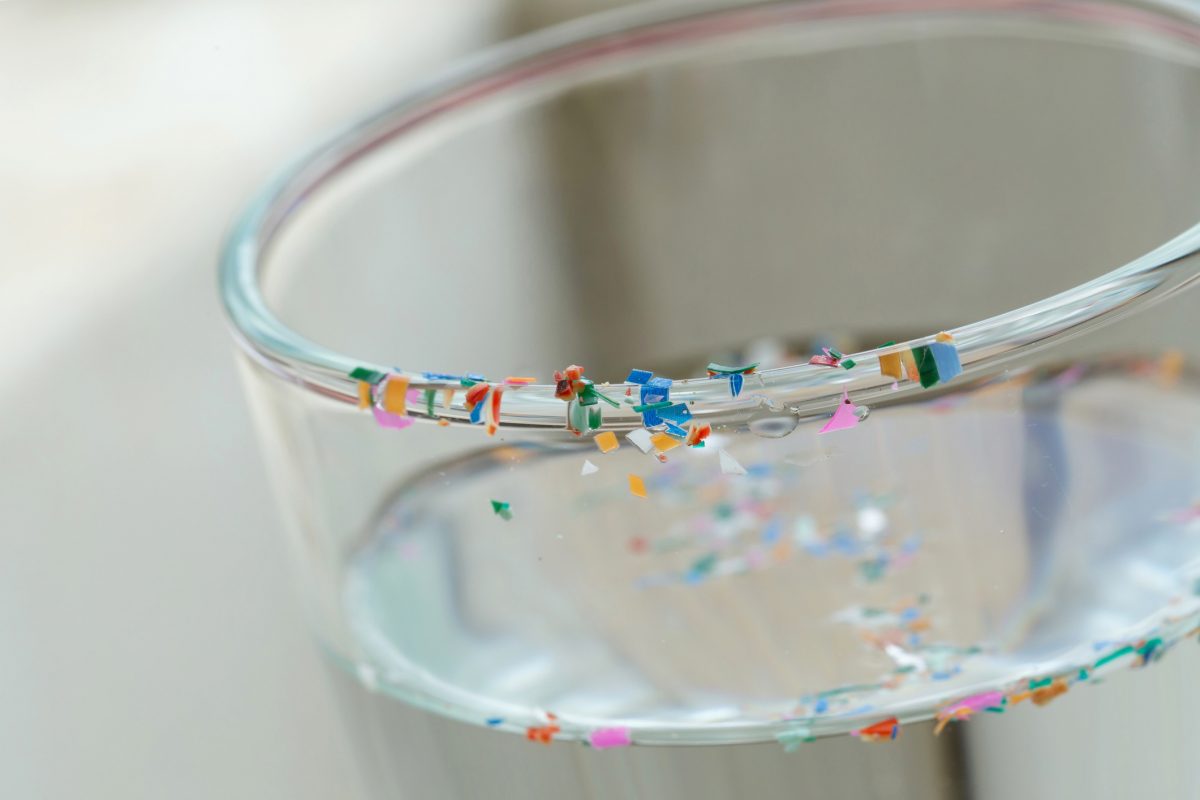Microplastics been discovered in the air, the ocean, tap and bottled water and in animals — including humans.
Scientists estimate that people are ingesting an average of five grams of microplastic particles a week. That’s the equivalent of eating a credit card!
And it’s building up in our bodies…
Research shows microplastics can enter the bloodstream and cross the blood-brain barrier. In the human brain, researchers warn this could potentially increase the risk of inflammation, neurological disorders or even neurodegenerative diseases such as Alzheimer’s or Parkinson’s.
Microplastics have even been found in the plaques that can clog our arteries.
Now, researchers at the University of New Mexico (UNM) have discovered that microplastics could make their way from your gut into the tissues of other organs like your kidneys, liver and brain.
Here’s what that could mean…
Microplastics migrate from the gut
The UNM researchers exposed mice to microplastics in their drinking water over a four-week period. They added an amount of microplastics equivalent to the quantity humans are believed to ingest each week.
Results showed that not only had the microplastics changed the microbiota in the gut, but they also migrated out of the gut into the tissues of the liver, kidneys and brain.
If that wasn’t bad enough, the microplastics also changed metabolic pathways in tissues they travelled to.
Dr. Eliseo Castillo, a UNM professor leading the charge on microplastics research, says “That tells us it can cross the intestinal barrier and infiltrate into other tissues.”
We’ve known for a while now that contaminants can permeate the gut lining. It’s what’s known as leaky gut and is already considered an open door to disease.
“These mice were exposed for four weeks,” he says. “Now, think about how that equates to humans if we’re exposed from birth to old age.”
Previously, Castillo and his team found that microplastics changed the function of macrophages — immune cells that are protective against foreign particles — causing them to release proinflammatory molecules.
“During intestinal inflammation — states of chronic illness such as ulcerative colitis and Crohn’s disease, which are both forms of inflammatory bowel disease — these macrophages become more inflammatory and they’re more abundant in the gut.”
Dodging the microplastic menace
Castillo says he hopes his continuing research will help spark changes in how society produces and filtrates plastics.
But knowing the potential health impacts, is there any way to avoid microplastics? Unfortunately, the answer is “not completely.” But you can take steps to minimize your exposure…
- Try to avoid foods that come packaged in plastic, including takeout and fast foods. When reheating foods, make sure you use glass containers instead of plastic.
- Ditch bottled water. Use a reverse osmosis filter to help filter microplastics out of your faucet water or consider the technique discovered by researchers in China that doesn’t require any special tools.
- Eating an organic diet may not completely remove the microplastic threat, but it can reduce the burden of toxicity on your body.
Research does indicate you eliminate some of the microplastics you consume in your urine, bile, feces and other bodily fluids and wastes.
If your transit time (the length of time for stool to leave your colon) is slow, work on improving that. The longer stool remains in the colon, the contaminants can work their way through the gut lining into the bloodstream.
Because chemicals like BPA have been found in sweat, exercise may be another way to help rid your body of these contaminants.
Sources:
Microplastics make their way from the gut to other organs, UNM researchers find — EurekAlert!
In Vivo Tissue Distribution of Polystyrene or Mixed Polymer Microspheres and Metabolomic Analysis after Oral Exposure in Mice — Environmental Health Perspectives
Read full article here




